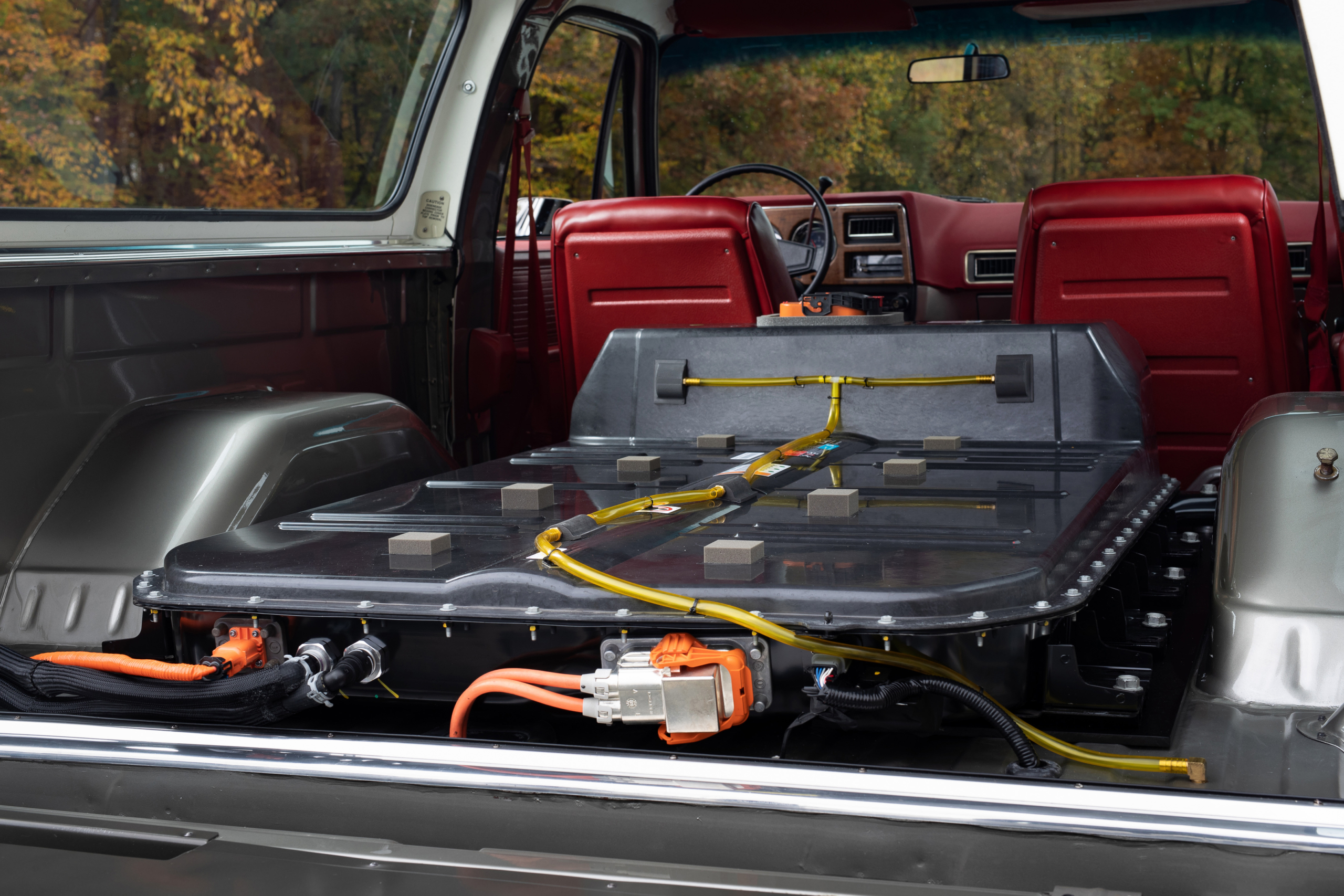Electric vehicle technology is moving forward at a rather amazing pace. Sporty EVs are getting really fast and conventional EV vehicles have ever-growing driving ranges. In my opinion, the charging infrastructure needs immediate attention as we’re mostly limited to level-2 charging in the United States. Hopefully, as more charging stations appear, the maximum power transfer rates will increase as well.
The idea of retrofitting older vehicles with new electrical power isn’t new but it is challenging. One needs to integrate a battery pack, motor(s), and various supporting electronics into a vehicle that was designed for an internal combustion engine and fuel tank. It is very doable but doing it right requires some serious design.
Looking at the ’77 Chevy Blazer-E, the proof of concept of the upcoming Electric Connect and Cruise package Chevrolet Performance plans to sell in the second half of 2021, one thing sticks out. The design uses all of the cargo area of the Blazer behind the front seats. This in turn makes a functional vehicle into a two-seater with basically no cargo space.
I assume that the pictured battery pack in the cargo area will get hot. I assume that placing things on top of is not recommended. None of that sounds great. I think GM did this way to show off the battery but I would have been more interested in a system that is more integrated into the vehicle. For instance, this Blazer had a fuel tank that was bigger than 30-gallons – what was placed in that location?
In proposing EV retrofit packages to potential clients, I’d think that showing something that doesn’t take away most so much vehicle functionality would be beneficial. This is a really cool concept that could have been so much better, so much more realistic. I can’t see potential customers being fine with ditching passenger space for batteries.


Leave a Reply